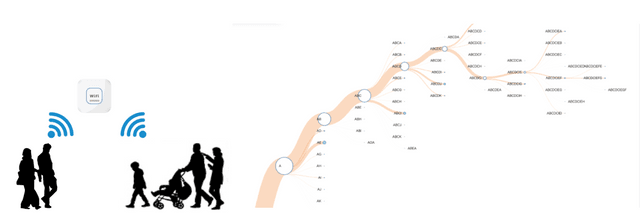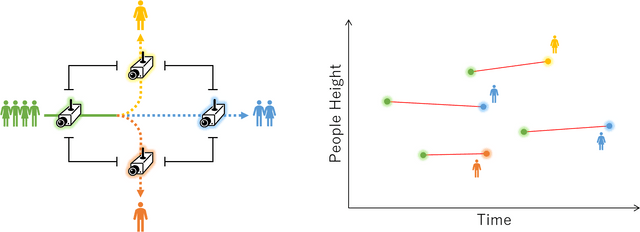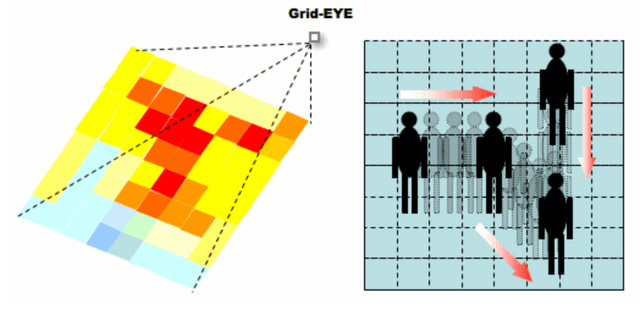Urban Sensing
TOC
Urban Sensing Group conducts researches using sensor data at various area levels, from the room level to the city level. Currently, we are analyzing human mobility using 3D pass sensors and Wi-Fi packet sensors, position estimation using pyroelectric sensors, and household power analysis using environmental sensors and smart meters.
Person-Flow Estimation using Wi-Fi Packet Sensors on Leisure facilities

In this study, we used Wi-Fi packet sensors installed at the Higashiyama Zoo and Botanical Garden to estimate the flow of visitors to the park. The MAC addresses included in Probe Requests sent from Wi-Fi devices such as smartphones and tablets are anonymized to create moving series data for each visitor. The moving series data is analyzed to estimate the degree of congestion and moving routes in the park. Using the estimated Person-Flow data, we aim to establish efficient facility management and various services for visitors.
Privacy-Aware Person-Flow Estimation using 3D People Counters

We are going to achieve Privacy-Aware Person-Flow Estimation by 3D People Counters installed at entrances of a target area. The data collected by 3D People Counters only include people height, walking speed, passing time and direction, and not include privacy information by GPS or Wi-Fi Sensing. Using height and walking speed similarity and duration between entrance and exit of all sensors, we estimate person-flow by extracting what is considered to be the movement of one person.
Crowd Flow Forecasting using Deep Learning

In this study, we use deep learning to predict future crowd flows from the same sensor data as in “Privacy-Aware Human Flow Estimation using 3D Passage Sensors". By incorporating the following features into the deep learning architecture, we can build a deep learning model specialized crowd flow and achieve accurate prediction: people act on a daily basis, crowd flow is affected by the number of passengers on and off trains, and complex sensor networks are formed.
A Study on Human Location Estimation Method Using Infrared Sensor with Deep Learning

In this research, we estimate the position of a person based on two-dimensional temperature information obtained from infrared sensors. We use deep learning to improve the robustness against noise and differences in usage environment. Compared to other location estimation methods, our method does not require the target to have a smartphone or other device, and it is less prone to privacy issues.